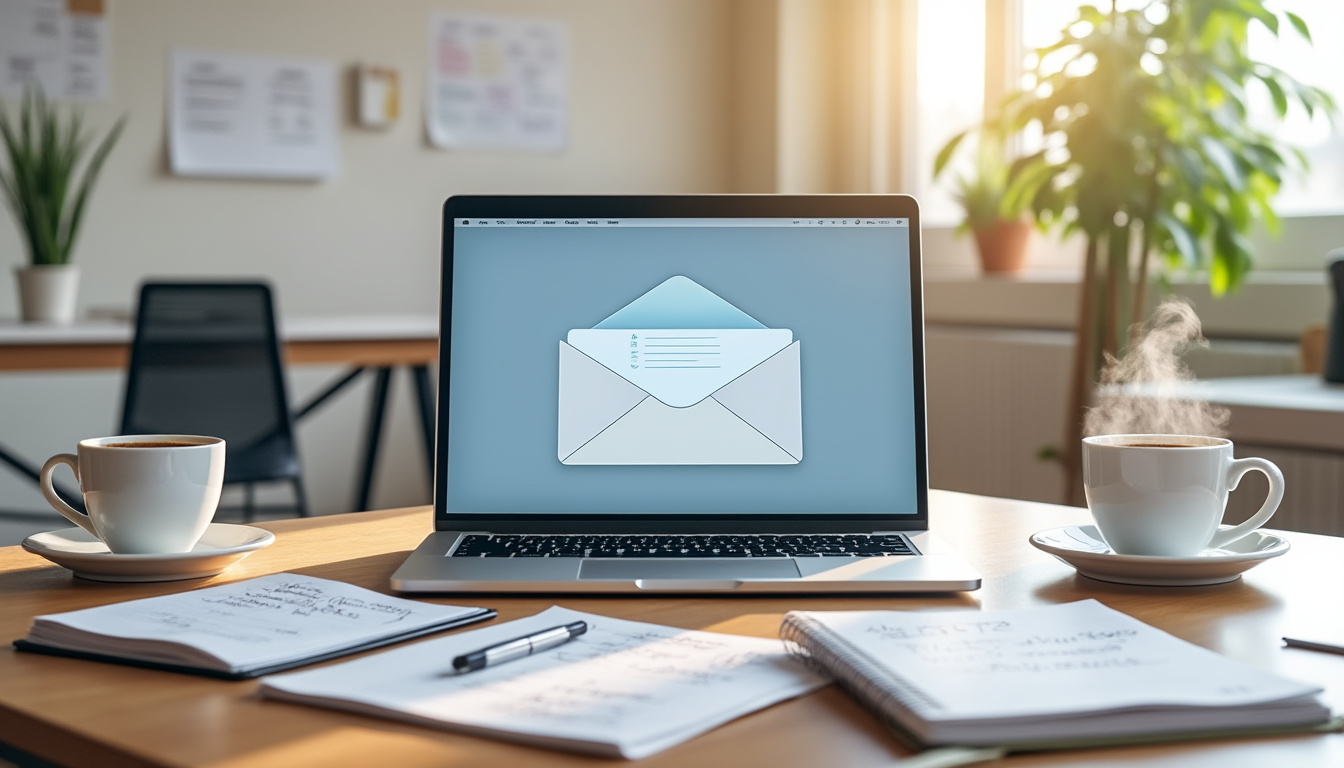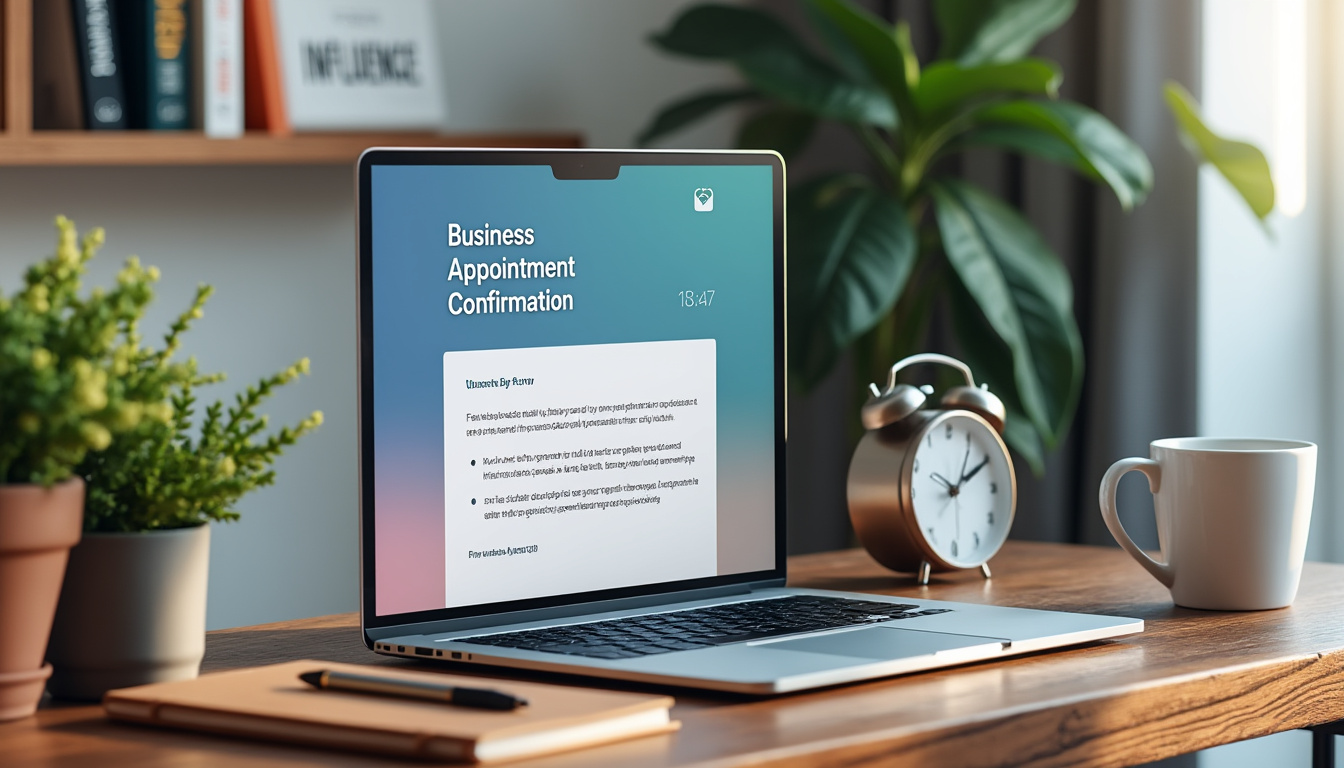In the fast-paced professional world of 2025, where emails serve as the primary communication channel, mastering the art of requesting a meeting through email is crucial. A well-crafted request can distinguish between a meaningful conversation and a message that fades into oblivion. This guide delves into the best practices for effectively writing a meeting request email, highlighting communication strategies that enhance the likelihood of receiving a prompt response.
Structuring a Compelling Email for Meeting Requests
The organization of your email significantly impacts its reception. A well-structured message captures the reader’s attention at first glance. To ensure your request is not overlooked, paying careful attention to every element of your email is essential.
Choosing a Catchy Subject Line
Your first contact occurs through the subject line. A clear and concise subject line immediately indicates your intention. For instance, « Meeting Proposal to Discuss Our Collaboration » clearly communicates the message content without ambiguity. The words chosen here should be relevant and directly connected to the request at hand.
Salutation and Introduction
Begin your message with a professional salutation that includes the recipient’s first name or last name, establishing rapport from the outset. In the body of the email, it’s best to briefly outline who you are, specifying your position and the reason for requesting the meeting. A direct introduction reflects your seriousness and determination.
Avoiding Unnecessary Lengths
An effective email communicates the point directly. Readers, often pressed for time, appreciate concise communication. Avoid overloading the reader with excessive details at the beginning. For example, instead of stating, « I received a recommendation regarding your expertise, » a more straightforward approach such as, « Following [Name]’s recommendation, I would like to arrange a meeting to discuss… » keeps the reader engaged without causing boredom.
| Element | Description |
|---|---|
| Subject | Choose a clear subject that reflects the purpose of your email. |
| Salutation | Use the recipient’s first name or last name to personalize the message. |
| Body | Get straight to the point by stating the purpose of the meeting. |
| Call to Action | Suggest specific time slots while allowing the recipient options. |
| Closing | Thank the recipient for their time and consideration. |
Adapting Content to the Situation
Customizing your email content based on the relationship with your interlocutor is paramount. Each meeting request is unique, and the tone used must correspond to this dynamic.
The Choice of Tone
A formal tone is necessary when addressing a superior or a new contact in a professional setting. Conversely, a more relaxed tone may be suitable for a colleague or an established partnership. For example, a casual « Hi [Name], how about grabbing a coffee to discuss our projects? » often suffices in building a connection.
Considering Availability
Demonstrating empathy by acknowledging your recipient’s constraints amplifies your message’s impact. Instead of merely requesting a meeting, present multiple time slots. For instance, « I am available Wednesday afternoon or Thursday morning; which would work best for you? » shows you value their schedule.
Personalizing Your Request
Referencing previous exchanges can also encourage acceptance of a meeting. Mentioning a project discussed earlier roots your message in shared history and strengthens the bond. This personalization indicates that you have invested time and effort beyond a mere contact routine.
- Choose a tone reflecting the nature of your relationship.
- Offer multiple time slot options for the meeting.
- Reference past discussions to ground your request.
Using Clear and Engaging Language
The language utilized in a meeting request email should be accessible and captivating. Avoid technical jargon or convoluted phrases that might confuse the recipient.
Clarity and Simplicity
Employing a straightforward writing style enhances communication effectiveness. For instance, instead of saying, « I would like to request a meeting to explore potential collaborations, » opt for a direct phrase: « I would like to discuss collaboration opportunities between our teams. »
Generating Interest
Engaging phrases like « I would be delighted to meet with you » or « I look forward to our discussion » create a positive atmosphere from the beginning. This can make the difference between a stale email and one that excites the reader.
Examples of Effective Meeting Requests
Here are some concrete examples of meeting request emails tailored to different contexts:
| Situation | Email Example |
|---|---|
| Formal Request | Dear [Name], I am [Your Name], [Your Position] at [Your Company]. I would like to schedule a meeting to discuss the progress of our project. |
| Informal Request | Hi [Name], I hope you are well! It’s been a while. Would you like to grab a coffee this week to discuss our projects? |
| Follow-Up After an Event | Dear [Name], I really enjoyed our conversation at [event]. I would like to delve deeper into certain topics. Do you have time this week? |
Ending with an Effective Call to Action
An email requesting a meeting must conclude with a clear call to action. This guides the recipient towards an immediate response and facilitates follow-up.
Reiterating the Request
Regardless of the message quality, it is vital to remind the recipient of the email’s subject at the end. Closing with a sentence such as, « Please let me know which time slot works best for you, » promotes a quick response.
Contextualizing the Importance of the Meeting
Highlighting the potential benefits of the meeting may also prompt the recipient to envision the conversation’s value. For instance, « This meeting will help us optimize our collaboration and explore new opportunities » often enhances the desire to connect.
Structure of an Effective Conclusion
An optimized conclusion includes a summary of the subject and a note of appreciation. It’s important to express gratitude for the time the recipient will spend considering your request.
- End with a clear call to action.
- Contextualize the meeting’s importance.
- Thank the recipient for their consideration.
Avoiding Common Mistakes in Meeting Requests
To ensure that your meeting request is well-received, several mistakes should be completely avoided. These pitfalls, often underestimated, can hinder the effectiveness of your communication.
Clarity and Conciseness
A lack of clarity can lead to misunderstandings. Remaining authentic and direct in your statements is crucial. Ensure there is no doubt about the purpose of your message.
Not Being Overly Insistent
Avoid being overly eager. A respectful follow-up may be appropriate if you haven’t received a reply after a few days, but patience is key. Excessive reminders can create a negative impression and damage perceived relationships.
Attention to Errors
Checking spelling and grammar is vital. An email riddled with errors can significantly undermine the sender’s credibility. Using a spell checker and proofreading multiple times is recommended.
| Common Mistake | Consequence |
|---|---|
| Lack of Clarity | The recipient may not understand the request. |
| Excessive Insistence | May irritate the recipient and harm the relationship. |
| Spelling Mistakes | Negative impact on professional image. |
The Importance of Communication Mastery in Meeting Requests
Mastering communication for requesting meetings via email is a key skill in today’s world. By employing a structured approach, tailored content, and clear language, one can increase the chances of obtaining a positive response.
Frequently Asked Questions about Requesting Meetings via Email
What should I include in a meeting request email?
Ensure to include a clear subject line, a professional salutation, the purpose of the meeting, proposed time slots, and a polite closing thanking the recipient for their consideration.
How soon should I follow up on a meeting request?
It is generally acceptable to follow up after three to five business days if you haven’t received a response. Always approach the follow-up politely.
How can I make my request stand out?
Personalizing your email, referencing previous conversations, and using an engaging tone can help your request stand out.
Is it better to suggest multiple time slots or propose one specific time?
Offering multiple time slots shows flexibility and consideration for the recipient’s schedule, increasing the likelihood of finding a mutually convenient time.
What if I don’t have a specific agenda for the meeting?
Even without a specific agenda, you can still propose a meeting to discuss potential collaboration, ideas, or updates relevant to both parties. Simply express your intention to exchange valuable insights.
Thank you for taking the time to read this guide. For additional resources on professional communication, consider exploring tools like Calendly, Doodle, and SimplyBook.me for scheduling ease.













